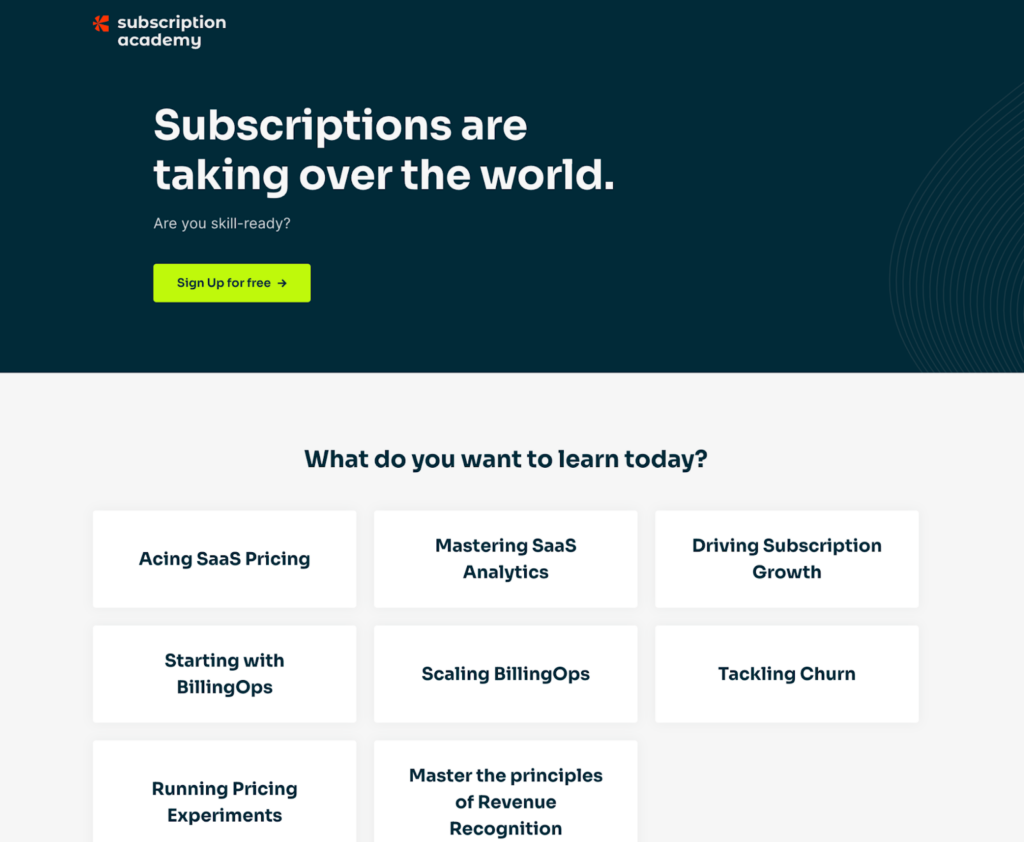If you’re an avid user of software products, chances are you’ve gotten an email asking you how likely you are to recommend the product/app/service to others (on a scale of 0 to 10). In business, this is called the Net Promoter Score (NPS) question.
In this guide, we’ll explore:
- Introduction to Net Promoter Score
- How to calculate NPS
- NPS benchmarks by industry
- Strategies to improve your NPS
- NPS and customer satisfaction
- NPS email templates
- Integrating NPS into business strategy
- FAQs
Introduction to Net Promoter Score
Net Promoter Score (NPS) is a metric used to measure customer satisfaction and loyalty based on the simple question: “How likely is it that you would recommend our company/product/service to a friend or colleague?”
Customers typically answer this question based on a scale from 0 to 10. Based on their responses, customers are categorized into three groups:
- Promoters (score 9 – 10): These are highly satisfied customers who are likely to recommend the business to others.
- Passives (7 – 8): These customers are satisfied but not enthusiastic. While they’re unlikely to speak negatively about the business, they may not actively promote it either.
- Detractors (0 – 6): These are dissatisfied customers who may spread negative feedback about the business.
Net Promoter Score, as a concept, was introduced by Fred Reichheld, a partner at Bain & Company, in a 2003 Harvard Business Review article titled, The One Number You Need To Grow. As a business strategist, Reichheld was dissatisfied with spending tons of money and resources on sophisticated customer satisfaction tools that don’t generate useful statistics. So he tried to figure out a way to simplify the complicated survey process while generating useful results.
After two years of research, Reichheld realized that the most effective route was to find out how willing customers were to recommend a product or service to other people. This became what we now know as the Net Promoter Score.
Since its introduction, NPS has gained widespread adoption across industries as a valuable tool for businesses to assess and improve customer experiences. Here are some reasons why:
- Quick and easy measurement: The simplicity of the NPS question makes it easy to administer and quick for customers to respond. This increases the likelihood of customer participation, providing businesses with a steady stream of feedback for continuous improvement.
- Customer loyalty measurement: NPS provides a clear and concise way to assess customer loyalty. By categorizing customers into Promoters, Passives, and Detractors, businesses can understand the overall sentiment and likelihood of customers recommending their products or services.
- Identifying improvement areas: Analyzing NPS feedback helps pinpoint specific areas where a business can improve. Understanding why customers are promoters or detractors allows companies to make targeted changes, enhancing overall customer satisfaction.
- Business growth predictor: Measuring NPS can help a business predict how much it’ll grow. For example, promoters are more likely to make repeat purchases and recommend the business to others, contributing to organic growth without significant marketing efforts.
- Benchmark comparison: NPS allows businesses to compare their performance against industry benchmarks. This benchmarking helps businesses set realistic goals for improvement and understand where they stand relative to competitors in terms of customer satisfaction.
- Employee engagement: Since NPS is closely tied to customer experience, it can also serve as a tool to measure and improve employee engagement. Satisfied employees often contribute to positive customer experiences, and NPS can be used as a reflection of the internal health of a company.
How to calculate NPS
Here’s a step-by-step guide to calculating your Net Promoter Score (NPS):
- Send out a survey to your customers asking the NPS question: “How likely is it that you would recommend our company/product/service to a friend or colleague?” on a scale from 0 to 10.
- After getting answers, classify the respondents into three groups based on their scores:
- Promoters (score 9 – 10)
- Passives (score 7 – 8)
- Detractors (score 0 – 6)
- Determine the percentage of respondents in each category. The formula is (Number of respondents in each category ÷ Total number of respondents) X 100.
So if you surveyed 250 people and 100 of them gave a score of 9 or 10, the percentage of promoters would be: (100 ÷ 250) X 100 = 40%.
- Subtract the percentage of Detractors from the percentage of Promoters to get your NPS. So if 40% of respondents are Promoters and 20% of them are Detractors, your NPS is 40 – 20 = 20.
- The resulting NPS will be a numerical value (as shown in point 4), which could be positive, negative, or zero. Interpret the score based on the scale of improvement:
- High positive (i.e. above 50): This indicates strong customer loyalty and positive word-of-mouth.
- Low positive (i.e. 30 to 50): This suggests satisfactory, but not outstanding customer loyalty.
- Negative (below 30): This signals potential issues with customer satisfaction and a need for improvement.
NPS benchmarks by industry
NPS benchmarks are the average Net Promoter Score for a specific industry on a scale from -100 to 100. These benchmarks provide a way for companies to assess their Net Promoter Scores in comparison to industry standards or competitors.
Some industries naturally have higher or lower average NPS scores. For example, technology companies might have higher average scores than cable providers. Studying NPS benchmarks gives you insights into how you stack up in your industry and what you should improve upon.
Below are two tables populated with NPS benchmarks by industry, based on a 2023 study by Retently.
Table 1: For Business-to-Business (B2B) companies
| Industry | Average Net Promoter Score |
| Consulting | 67 |
| Technology & Services | 64 |
| Construction | 60 |
| Digital Marketing Agency | 53 |
| B2B Software and SaaS | 41 |
| Logistics and Transportation | 41 |
| Cloud & Hosting | 39 |
Table 2: For Business-to-Consumer (B2C) companies
| Industry | Average Net Promoter Score |
| Insurance | 74 |
| Financial Services | 71 |
| Retail | 61 |
| eCommerce | 50 |
| Healthcare | 45 |
| Communication & Media | 29 |
| Internet Software & Services | 9 |
Strategies to improve your NPS
If you’re trying to improve your Net Promoter Score, here are some strategies to try:
Educate your customers
Customer education involves providing information, resources, and learning opportunities to your customers to help them better understand and use your product/service.
By educating your customers, you’re enhancing their knowledge of your product, empowering them to solve their problems independently, improving their user experience, reducing support requests, and offering added value — which can differentiate you from your competitors and cultivate brand loyalty.
Ways to educate your customers include
- Product training, including tutorials, demonstrations, and step-by-step guides;
- Onboarding programs to help new customers get started with your product/service;
- Written documentation and guides, such as FAQs, user manuals, and knowledge base articles to answer common questions and troubleshoot issues;
- Webinars and workshops that offer in-depth insights into product features, use cases, and best practices;
- Structured learning platforms with online courses covering various aspects of a product/service, etc.
A great example of a customer education program is Chargebee’s Subscription Academy, which offers online courses on topics like SaaS pricing, SaaS analytics, BillingOps, and tackling churn. These courses teach Chargebee’s customers how to optimize their prices, retain their customers, and drive revenue growth.

Chargebee created this academy with Thinkific Plus, a customer success platform with powerful features that help you create online learning resources (including onboarding and product training resources) for your customers. With Thinkific Plus, you get access to an easy-to-use drag-and-drop course builder, templates, and robust analytics that track customer engagement, completion rates, and success.
Enhance your customer service and support
Excellent customer service is a key driver of customer satisfaction and loyalty. Ensure that your customer support team is well-trained, responsive, and capable of addressing customer issues promptly. Implementing a customer-centric approach in your support operation can lead to increased satisfaction and, in turn, a higher NPS.
Personalize customer interactions
According to McKinsey’s Next In Personalization 2021 report, 71 percent of consumers expect personalized interactions with customer support, and 76 percent of them are more likely to consider purchasing from brands that personalize.
To improve personalization, you’ll need to study their data, preferences, and history with your brand, if applicable. Knowing your customers on a personal level helps you tailor your communication, offers, and recommendations to address your customers’ unique needs.
Personalized experiences create a positive impression and contribute to customer loyalty, which improves the likelihood of receiving positive NPS ratings.
Streamline your processes
Evaluate and streamline your processes to ensure a smooth and user-friendly experience for customers. This includes website navigation, purchase processes, and any other touchpoints they have to go through to derive value from your product/service. Simplifying your processes reduces friction, which contributes to higher customer satisfaction and retention, and an improved NPS.
Resolve issues proactively
Don’t wait till your customers complain about something before you resolve it. Instead, identify potential issues with your product/service before they escalate and solve them quickly. A proactive stance demonstrates your commitment to customer satisfaction and can prevent Detractors from leaving negative reviews of your brand online.
Solicit and act on feedback
Regularly seek feedback from customers, not only through NPS surveys, but also through other channels such as social media, review websites, and customer forums. Actively listen to customer opinions and use the feedback to make tangible improvements.
Being responsive to feedback shows customers that you care about them, which will increase their willingness to recommend your business to others.
Train your employees
Employees play a crucial role in shaping the customer experience. So, invest in training programs that emphasize customer service skills, empathy, and problem-solving. Engaged employees who understand the importance of customer satisfaction are more likely to deliver positive experiences, leading to a higher NPS.
Leverage positive customer experiences
Encourage existing customers to leave positive reviews about your product/service on review sites. If possible, ask them to make a short video of how beneficial your offer(s) have been to them. Post these positive reviews and testimonials on your website, social media profiles, and other marketing channels you use.
Promoters are your brand advocates, and their positive word-of-mouth can attract new customers and contribute to an increase in NPS.
NPS and customer satisfaction
So far, in this article, the terms “customer satisfaction” and “NPS” have been used in close conjunction with each other. That’s because, while customer satisfaction and NPS are different, they’re directly linked.
Customer satisfaction is a general measure of how content or pleased a customer is with a product, service, or overall experience. You can measure customer satisfaction through several methods, including surveys, feedback forms, or reviews.
Customer satisfaction doesn’t tell you how likely your customers are to actively promote your business.
It does, however, contribute to the likelihood of someone becoming a promoter in the NPS framework. Satisfied customers are more likely to recommend a business, and thus, they contribute positively to the NPS — which, in addition to customer satisfaction, also measures brand advocacy and its potential impact on business growth.
To use NPS to improve your customer experience and satisfaction, here are some steps to take:
Analyze NPS feedback
Begin by thoroughly analyzing the feedback you get through NPS surveys. Figure out what Promoters appreciate, why Passives are on the fence, and where Detractors identify issues. Look for common patterns and themes among the responses.
Segment the feedback
Next, segment your NPS feedback based on customer demographics, product usage, and other relevant factors. This allows you to have a more granular understanding of the customer experience across different groups. It also makes it easier for you to identify improvement areas.
Prioritize improvement areas
After analyzing and segmenting your feedback, you’ll likely have multiple issues that Detractors have helped you identify. The next step is to prioritize these improvement areas based on the severity and frequency of issues raised in the feedback. Focus on aspects that will have the most significant impact on overall satisfaction and loyalty.
Close the feedback loop
Implement a closed-loop feedback system to follow up with customers who provided low scores. Engage with them, address their concerns, and communicate the steps you’re taking to improve their experience. This lets them know that you value their input and that you’re committed to improvement.
Incorporate feedback into product development
Improving customer experience and satisfaction is largely about giving customers what they want, how they want it. So as you work on improving your product or service, keep the NPS feedback at the center. Identify the problems customers are having with your offer and fix it to work the way they want it to — not the way you think it should.
Monitor your NPS continuously
Customer expectations and preferences can evolve. So collect NPS and customer feedback regularly to track the impact of your improvement initiatives and stay ahead of changing needs. Use this information to make new improvements and deliver a consistently exceptional experience.
NPS email templates
While some companies ask the NPS question in-app or on their website, most of them do so via email. If you’re planning to send an NPS survey soon, here are some best practices to keep in mind:
- Keep it simple. The NPS question should be straightforward and easy to understand. If not, customers may get confused, which can impact the accuracy of their responses.
- Use a standard scale. Some companies use a scale of 0 to 100, but it’s advisable to stick to the standard 0 to 10 scale for responses. Not only will it be easier for customers to understand, but it also helps with consistency and benchmarking.
- Ask a follow-up question. Don’t stop at the NPS question. Instead, include an open-ended follow-up question asking respondents to provide reasons for their score. This qualitative feedback provides context for improvement.
- Send NPS surveys at the appropriate times. There’s no set-in-stone time to send an NPS survey, but you’re more likely to get responses if you send one after a purchase, service interaction, or a specific touchpoint in the customer journey.
- Segment your audience. Analyze NPS scores based on customer segments (e.g. demographics, product usage, etc.) to help you tailor your improvements to specific customer needs.
- Share results internally. Share NPS results and insights across the organization. This ensures that the marketing, sales, customer support, and product development teams understand customer expectations and devise ways to meet them. ‘
If you’re sending your NPS survey via email, here’s a handy NPS Email Template Pack you can use.
Integrating NPS into business strategy
Integrating NPS into your business strategy involves more than just collecting scores; it requires a commitment to using customer feedback to inform strategic decisions and drive improvements. This involves developing action plans to address specific pain points highlighted by customer feedback, and communicating these plans both internally and externally.
By cultivating a culture of responsiveness to customer feedback and demonstrating tangible improvements over time, you not only enhance customer satisfaction and loyalty but also strengthen your competitive position in the market.
Consider Customer Education as a proactive strategy to improve your NPS Score. Look no further than Thinkific Plus to get started.
With Thinkific Plus, you get access to advanced, but user-friendly course creation tools and analytics to help you create and launch online learning resources tailored specifically to your customer segments. This helps you to drive customer engagement, enhance customer satisfaction, and boost retention rates.
What’s more, Thinkific Plus is designed to scale with you as your customer base grows and your customer education programs evolve.
Book a call with a Thinkific Plus expert today.
FAQs
What is a good NPS score?
What constitutes a good NPS score can vary across industries. While a score of 50+ is generally the goal, some industries have average NPS scores lower than 50. Benchmarking your NPS score against industry standards or competitors can provide more context for evaluating your performance.
How often should you calculate NPS?
The frequency at which you calculate your NPS should be based on factors such as your industry, business objectives, and the nature of customer interactions. But a good rule of thumb is to send out NPS surveys quarterly or semi-annually. This frequency provides a consistent measure of customer satisfaction and allows you to track changes over time.
You can also send your NPS surveys during product/feature launches or after specific customer touchpoints, such as the onboarding process, a purchase, customer service interaction, the completion of a project, or the end of a subscription period.
Can NPS predict business growth?
NPS has been proven to be a valuable indicator and predictor of business growth. The underlying principle is that satisfied and loyal customers, also known as Promoters in the NPS framework, are more likely to make repeat purchases, become long-term customers, and actively promote the business to others.
How to improve response rates for NPS surveys?
To improve your response rates for NPS surveys, optimize the survey experience. Keep the survey brief, with the NPS question and a short follow-up question, making it easy for respondents to provide feedback. Send surveys at appropriate times to capture insights when the experience is fresh in the customer’s mind.
Don’t forget to personalize survey invitations, communicate the purpose of the survey, and assure respondents about the confidentiality of their feedback. You can also use multiple channels, such as emails, SMS, or in-app surveys to reach a broader audience, and offer incentives to motivate customers to participate.







